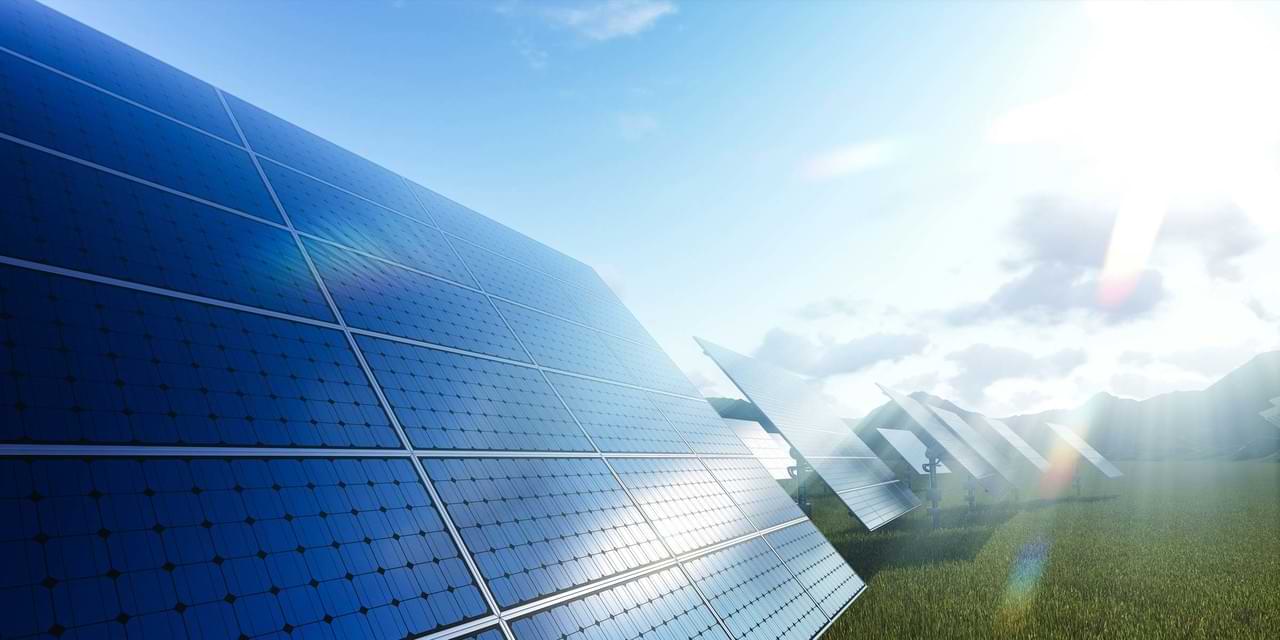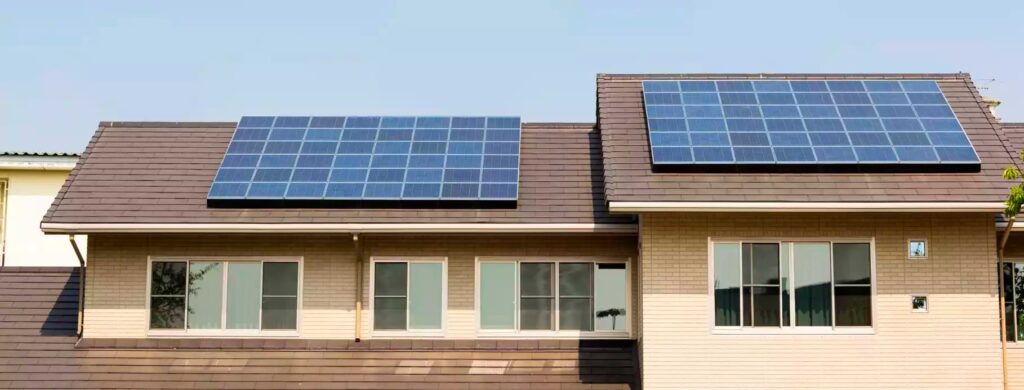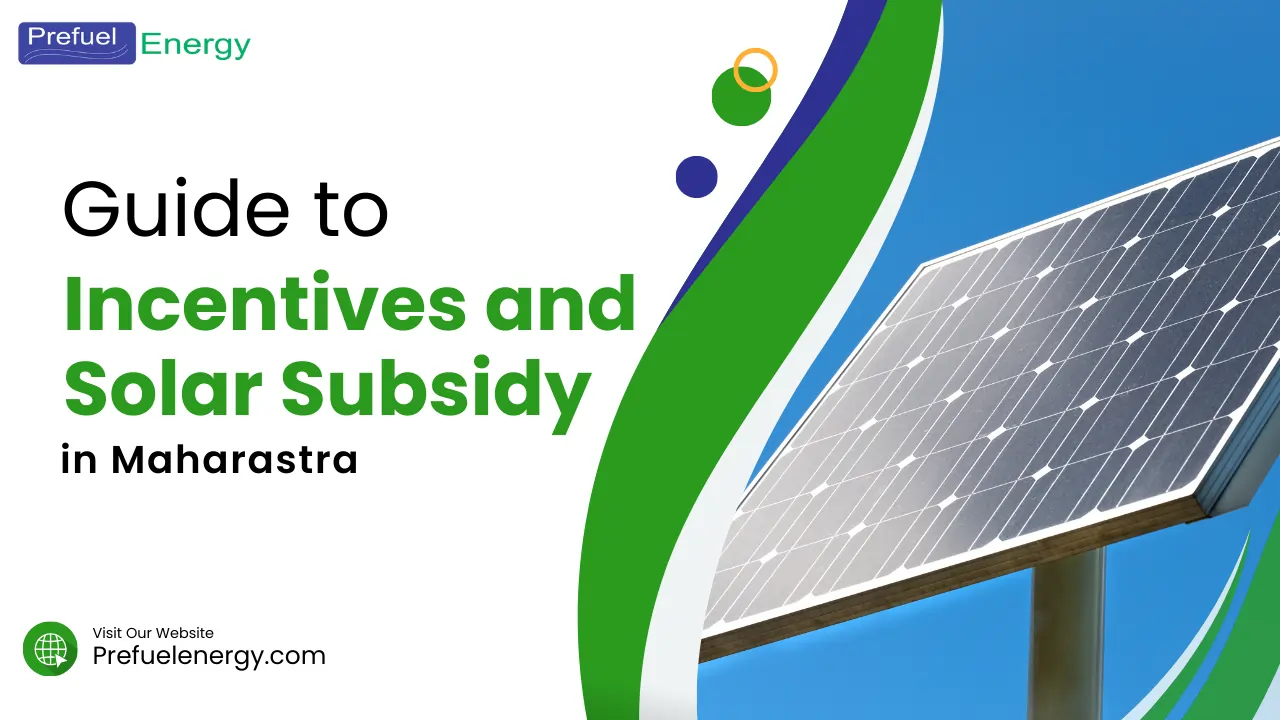Maharashtra has emerged as one of the leading states in India for solar power adoption across residential, commercial and industrial sectors. Attractive Solar Subsidy in Maharashtra by the state government coupled with rising electricity tariffs provide strong motivation for consumers to install rooftop solar panels. This article details the various solar incentives and subsidies, price trends and policies fueling Maharashtra’s solar growth story.

Table of Contents
Overview of Solar Subsidy in Maharashtra
With average solar insolation of 4-6 kWh per sq.m and ample unused rooftop spaces in urban centers, Maharashtra holds immense potential for distributed solar generation.
Key Solar Power Statistics for Maharashtra:
- Total installed solar capacity as of Dec 2022: 1,800 MW
- Rooftop solar capacity: 475 MW
- Large-scale solar parks: 1,325 MW operational capacity
- Share of solar in overall state generation mix: ~7%
To tap this potential, Maharashtra has set an ambitious state solar target of 10,000 MW by 2025 including 5,000 MW rooftop solar.
The state already saved around Rs. 800 crores in power purchase costs in 2022 through existing solar plants as electricity tariffs cross Rs. 7.5 per unit.
Incentives Offered and Solar Subsidies in Maharashtra
The key incentives and subsidies to promote rooftop solar installations in Maharashtra are:
1. Capital Subsidy on Rooftop Solar Plants
Under the state policy, residential consumers can avail subsidies up to 40% of benchmark system costs covering solar panels, inverters, BoS etc.
| Consumer Category | System Size | Subsidy Rate |
|---|---|---|
| Residential | First 3 kW | Rs. 27,000 per kW |
| Above 3 kW | Rs. 18,000 per kW | |
| Housing Societies | First 50 kW | 30% of benchmark cost |
| Above 50 kW | 20% of benchmark cost |
This subsidy is provided through the state nodal agency Maharashtra Energy Development Agency (MEDA).

2. Generation Based Incentive (GBI)
For surplus solar units exported to the grid by net-metered rooftop plants, an additional GBI of Rs. 2.5 per kWh is provided for 10 years. This is over and above the net metering compensation from DISCOMs.
3. Accelerated Depreciation
Commercial and industrial consumers can further benefit through accelerated depreciation of 40% on rooftop solar investments as per IT act.
4. Property Tax and Electricity Duty Exemptions
100% exemption from electricity duty and property tax is provided on solar PV system cost.
Solar Panel Price Trends in Maharashtra
Solar panel prices in India have shown a declining trend with improving economies of scale, supply chain maturity, competition and technological advancements. From around Rs. 22 per watt for solar panels in 2010, current PV module rates have reduced by over 75% to about Rs. 5 per watt.

With GST rationalization from 5% to zero rating, solar system costs have further dropped in 2022. Tier-I solar module suppliers like Waaree, Tata Power Solar, Vikram Solar etc. have set up large manufacturing capacities in Maharashtra itself creating a stable local supply ecosystem.
Indicative Price Range for Solar Systems in Maharashtra
| System Size | Price Range |
|---|---|
| 1 kW Solar Rooftop | Rs. 55,000 to Rs. 65,000 |
| 3 kW Solar Rooftop | Rs. 1.6 Lakhs to Rs. 1.95 Lakhs |
| 5 kW Solar Rooftop | Rs. 2.5 Lakhs to Rs. 3 Lakhs |
Energy storage systems are still costly but expected to witness a demand surge soon. Electric vehicles growth will also boost solar adoption.
Subsidy on Solar Panels in Maharashtra
The Maharashtra state government provides generous subsidies to homeowners for installing rooftop solar panels under the net metering policy.
Solar Panel Capital Subsidy Rates:
| System Size | Subsidy per kW | Total Subsidy Amount |
|---|---|---|
| First 3 kW | Rs. 27,000 | 3 kW x 27,000 = Rs. 81,000 |
| Above 3 kW | Rs. 18,000 | (System size – 3) x 18,000 |
The key steps for consumers to avail the solar panel subsidy are:
- Determine appropriate solar system size as per roof space and electricity usage
- Find a MNRE certified installer or integrator on MEDA portal
- Installer does site survey, designs system, shares financing options
- Apply for grid connectivity and net metering through MSEDCL/DISCOM
- Installer submits online subsidy application to MEDA post installation
- Consumer receives subsidy amount directly into bank account within 2 months
Maharashtra aims to maximize solar adoption by easing this subsidy transfer mechanism directly to citizens.
Rooftop Solar Subsidy for Housing Societies
Housing societies with available rooftop area can also benefit from attractive solar subsidies to power common lighting, lifts, pumps etc. and reduce maintenance bills. As per the state solar policy, the rooftop solar subsidy provided to housing societies is:
| System Size | Subsidy Amount |
|---|---|
| First 50 kW | 30% of benchmark cost |
| Above 50 kW | 20% of benchmark cost |
Subsidized Benchmark Cost
- The MNRE has set a benchmark cost for rooftop solar systems at Rs. 70 per watt.
- So for a 50 kW system, the benchmark cost is 50,000 x Rs. 70 = Rs. 35 Lakhs
- 30% subsidy on this amount equals Rs. 10.5 Lakhs.
Clearly, this subsidy amount can lead to major savings for housing societies opting for rooftop solar power.
Book Your Free Solar Engineer Visit
Solar Inverter Subsidy in Maharashtra
While solar panels form the core power generation component, solar inverters play the crucial role of converting DC output from panels to usable AC current and synchronizing with the grid supply.
High quality inverters ensure smooth, uninterrupted power flow and extended system life.
Unfortunately, the Maharashtra solar policy does NOT provide any specific subsidy support on the inverter part. The capital incentives are only applicable on the solar PV system cost covering panels, mounts, cables etc.
So consumers need to assess inverter options carefully based on design parameters like capacity, voltage ranges, noise level, brand reputation and post-installation support.
Opex financing can allow spreading inverter costs over 5-10 years instead of full upfront payment.
Overall, despite no direct subsidy on solar inverters, MAHA consumers must invest in the right inverter technology even at added capital cost given its importance in stable solar power generation.
Government Subsidy for Large Solar Projects in Maharashtra
The state also promotes development of large grid-connected solar parks through private developers by offering project land, transmission infrastructure and attractive power purchase agreements.
Under the solar park scheme, developers can avail the following benefits:
- Subsidized land rates
- Ready infrastructure – roads, transmission lines, water supply etc
- Guaranteed power off-take at Rs. 3 per unit for 25 years
- Low interest debt financing
In turn solar project developers need to set up plants as per agreed capacity and timeline.
Over 1.3 GW solar parks have already been tendered out across districts like Solapur, Jalna, Buldhana, Washim with more planned.
So the state government subsidy and support catalyzes large investments into solar energy zones, creating local jobs while meeting renewable targets.
Subsidy on Off-Grid Solar Power Systems
Key Drawback: The solar incentives and subsidies offered in Maharashtra are specifically available only for grid-connected net metered rooftop systems.

Off-grid or stand-alone solar systems do NOT qualify for any state capital subsidy or benefits even though they can meaningfully impact farmers and rural communities.
Only central financial assistance is available for off-grid solar applications like solar pumps, home lighting systems etc. This gap needs to be addressed for driving broader solar adoption.
Subsidy Application Process for Rooftop Solar in Maharashtra
For installers/integrators:
- Inform consumer on subsidy amount applicable for the system
- Assist consumer in online portal registration and form submission
- Apply for grid connectivity on behalf of consumer
- Install & commission rooftop solar system
- Submit online subsidy claim along with consumer application, net metering approval, installation report etc.
For consumers:
- Determine appropriate solar system size matching electricity consumption pattern
- Compare quotes from certified/empanelled installers
- Pay subsidized price to selected installer post system installation
- Provide necessary KYC documents for subsidy application
- Receive capital subsidy amount directly into bank account
Therefore, the process ensures consumers need to pay only the discounted price after adjusting the subsidy support.

Conclusion
In summary, Maharashtra offers one of the most progressive solar subsidy in India with generous subsidies to drive adoption across residential buildings, housing societies, MSME units and industrial facilities.
Attractive capital incentives up to 40% on system cost, additional GBI benefits, 100% duty waivers coupled with rising grid power rates make a strong business case for installing solar rooftops.
Streamlined online processes for subsidy reimbursement directly into consumer accounts makes it hassle-free.
With solar already crossing 10% of installed capacity, Maharashtra aims to continue its leadership position by reaching 10 GW solar target through sustained policy support.
So consumers across categories should evaluate rooftop solar options to contribute towards building a green, sustainable future for the state.

